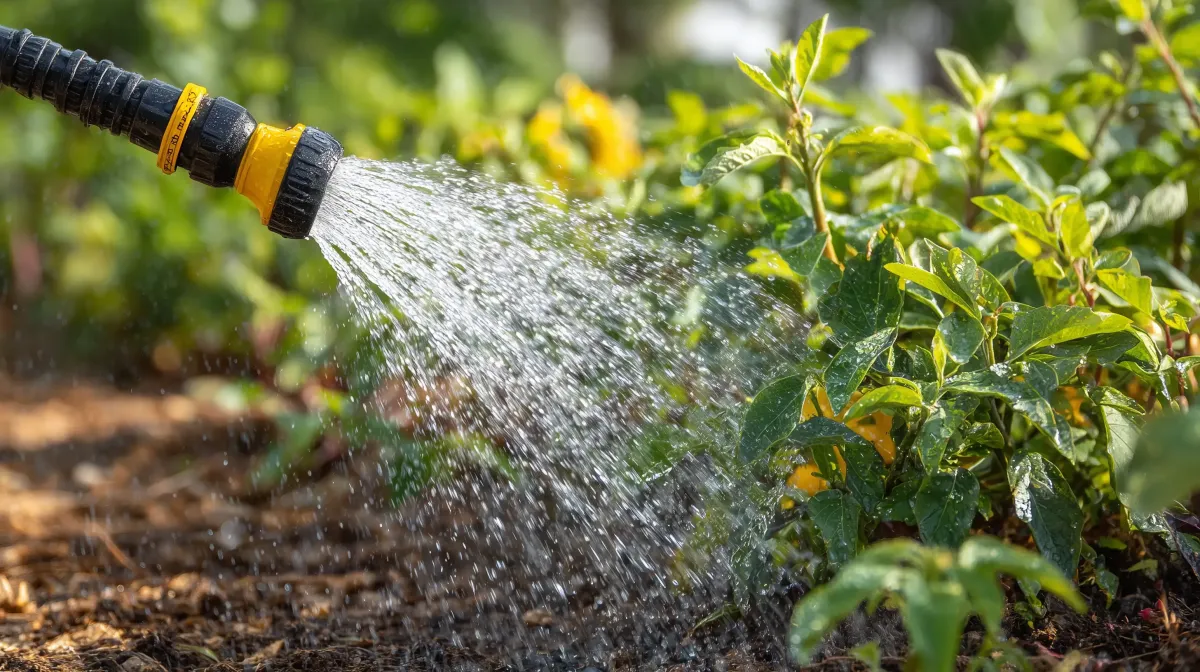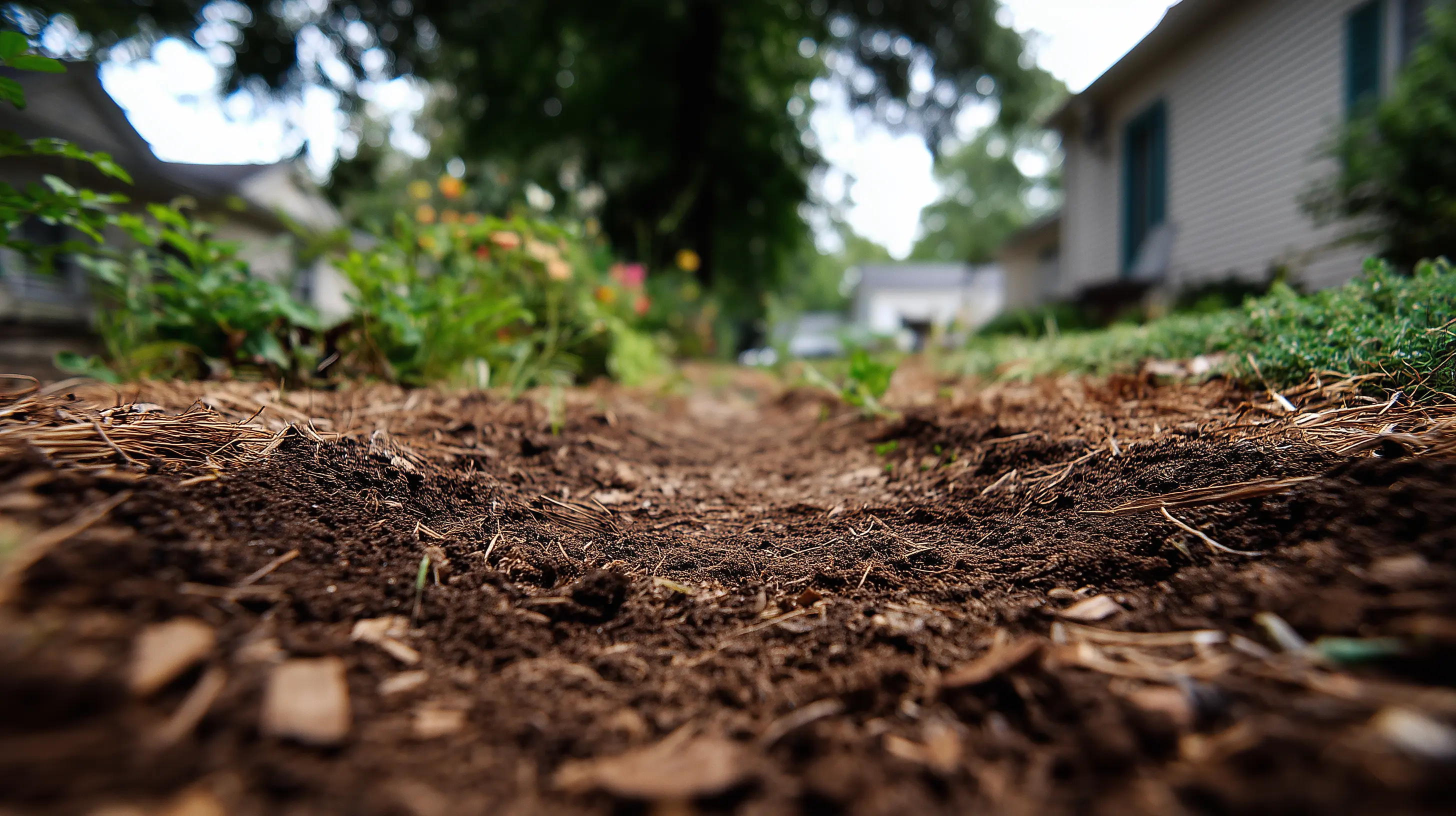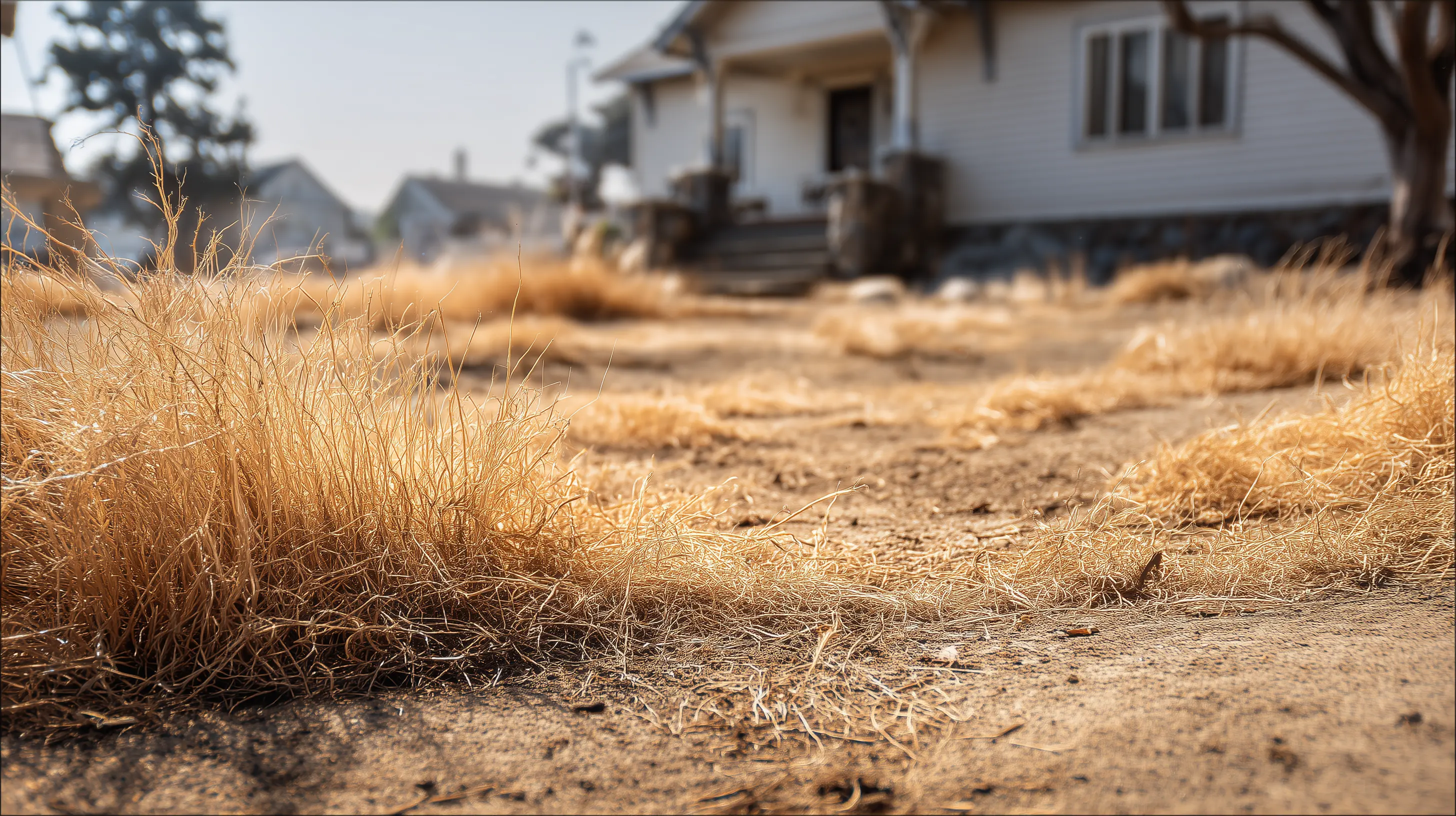

3 Biggest Summer Watering Mistakes to Avoid in Kokomo, Indiana
Summer in Kokomo, Indiana, can be tough on your lawn, especially if you don't water it the right way. Many people make simple mistakes that lead to brown spots, weak grass, or wasted water. If you avoid the three biggest summer watering mistakes, your lawn will stay healthy and green even during the hottest months.
Knowing when, how much, and how to water makes a big difference for your yard. You don’t have to guess or hope for the best. Small changes in your watering habits can save you time, money, and help your grass thrive all summer long.
Key Takeaways
Proper summer watering prevents damage from overwatering and underwatering.
Timing, amount, and method of watering matter for healthy grass.
Simple fixes keep your Kokomo lawn strong during hot weather.
Understanding Kokomo's Summer Lawn Watering Needs
Kokomo summers bring high heat and sometimes dry spells, making lawn care a real challenge. To avoid common watering problems, you need to match your watering strategy to your soil, sun exposure, and the types of grass in your yard.
Impact of Soil Type and Sun Exposure
Different soils in Kokomo absorb and hold water in their own ways. Sandy soil drains quickly and often needs more frequent watering because it doesn’t hold moisture well. Clay soil can keep water longer but may lead to puddling if you water too fast.
Pay attention to how much sun your yard gets. Areas in full sun lose moisture more quickly and will need more water during hot, dry weeks. On the other hand, lawns in shaded spots might need less frequent watering since less sun means slower evaporation.

Common Grass Varieties in Kokomo
In Kokomo, you mostly find cool-season grasses like Kentucky Bluegrass and Tall Fescue. Kentucky Bluegrass gives a rich, green yard but dries out fast in the heat. You’ll need to water it deep, about 1 to 1.5 inches per week.
Tall Fescue handles heat better and has deeper roots. You can give it a bit less water compared to bluegrass, but still watch for wilting.
Key Differences:
Kentucky Bluegrass: Cool-season, shallow roots, less drought resistance.
Tall Fescue: Cool-season, deep roots, good drought resistance.
Assessing Lawn Watering Needs and Drought Tolerance
How often you need to water depends on the layout of your property, the soil profile, and the grass variety you choose. Walk your lawn in the morning. If the grass springs back after you step on it, it's hydrated. If footprints stay, your grass needs water.
Drought tolerance varies:
Tall Fescue can go longer between watering sessions.
Kentucky Bluegrass needs steady moisture or it will quickly show drought stress—leaves curl and the color fades.
Use these traits to avoid common mistakes, like watering every day or not watering during heat waves. Aim for deep, infrequent watering based on visible signs and local weather, not just a set schedule. This keeps your lawn healthy without wasting water.
Mistake #1: Overwatering and Its Consequences
Overwatering is the most common summer watering mistake. Giving lawns or gardens too much water can damage roots, cause disease, and end up making the grass look worse instead of better.
Recognizing Signs of Overwatering and Root Rot
Overwatered lawns in Kokomo often look soggy or have standing water after you finish watering. You may also see yellowing grass, wilted leaves, and blades that feel soft instead of thick and sturdy.
Root rot is a common result of too much water. Roots need oxygen to stay healthy, but waterlogged soil shuts out air. Brown, mushy roots or a foul smell from the soil indicate that your roots have started to rot. Wilted plants with wet soil underneath most likely suffer from root rot, not drought.
Check soil moisture before every watering. Push a finger about an inch into the ground. If the soil feels wet, wait another day. Wilting when the soil is moist almost always means overwatering or root issues.
Fungal Diseases Linked to Excess Moisture
Extra water encourages fungal diseases, which thrive in warm, wet summers like those in Indiana. Lawn diseases such as brown patch show up as brown rings or patches with a darker border. You may spot gray, white, or pink fuzzy growth on your grass in the morning.
Overwatering leaves the blades wet for too long, letting disease spread fast. Fungi can destroy roots and make thin, patchy grass. Fungal spores can spread to other lawns if you mow or walk on affected areas.
To avoid fungal problems, water early in the morning so the grass dries before nightfall. Keep the blades dry as much as you can. If you notice discolored spots or fuzzy patches, stop watering for a few days, and remove clippings from the affected area.
Adjusting Watering Schedule for Healthy Lawns
It’s better to water less often but deeper to build strong roots. In Kokomo, your lawn usually only needs about 1 to 1.5 inches of water per week, counting rainfall. Use a rain gauge or an empty can to track how much water your lawn receives.
Watering deeply a couple of times a week will encourage roots to grow down, making your grass more drought-resistant. Watering every day or several times a day causes shallow roots and weakens your lawn. It also raises your water bill without improving lawn health.
Follow a set schedule, but always adjust for weather changes. After heavy rain, skip your next watering. During hot, dry spells, your lawn may need a little extra, but aim to water only when the top inch of soil is dry. Early morning watering helps the water reach the roots and lets grass dry out during the day.
Mistake #2: Underwatering and Drought Stress

Underwatering puts your lawn and garden at risk of drought stress, weak root systems, and poor overall plant health. Spotting the right signs and building the best routine keeps your landscape healthy, even during Kokomo’s hottest summer days.
Identifying Signs of Underwatering
Plants and lawns show clear signs when they lack enough water. Common symptoms include wilting, curling, or browning leaves, dry soil, and slow growth. In lawns, blades start to turn gray-green or even brown in patches. If you walk on your lawn and the footprint stays visible for several minutes, your grass may need more water.
Also, check the soil. Stick your finger about 2 inches deep. If the soil feels dry at that depth, it is time to water. Some plants may drop leaves early or develop crispy leaf edges. Watch for these changes, as early action is the best way to avoid lasting damage.
Drought-Resistant Practices for Indiana Summers
Summer in Indiana often brings hot days and periods of low rainfall, increasing water stress. Start by watering early in the morning, when temperatures are lower. This limits water loss from evaporation and helps roots absorb moisture efficiently.
Mulching is another key step. Add a 2-3 inch layer of organic mulch around plant bases and garden beds to keep soil moist and cooler. For lawns, avoid mowing too short; taller grass shades roots and reduces stress. Pick drought-tolerant plants like black-eyed Susan, yarrow, and daylilies for new landscaping, as these handle dry spells better.
Create a simple watering schedule based on weather, not a rigid routine. Skip watering after heavy rain, and adjust more often during dry or hot stretches. Use a rain gauge or soil moisture sensor to make informed choices.
Promoting Deep Root Growth with Proper Watering
Deep roots let plants and grass pull water from deeper soil, making them stronger during dry spells. To help roots grow deep, apply water slowly and thoroughly rather than in frequent, shallow doses. Aim for about 1 inch of water per week, whether from rainfall or irrigation.
Water until the soil is moist down to 6-8 inches for most lawns and gardens. For lawn health, a good way to check is to poke a screwdriver into the ground; if it goes in easily, the soil has enough moisture. Water less often but more deeply, and let the surface dry between waterings.
Avoid sprinkling each day for short periods; that only wets the topsoil and encourages shallow roots. Instead, stick with deep, even watering two to three times a week when needed. This builds a stronger, drought-resistant landscape in Kokomo’s summer climate.
Mistake #3: Poor Watering Techniques and System Issues
Using the wrong watering methods or issues with your sprinkler or irrigation system can lead to wasted water, increased disease risk, and patchy lawns. Paying attention to how and when you water, as well as making sure your equipment works correctly, keeps your garden and grass healthy during Kokomo’s hot summer months.
Watering at Night and Disease Risks
Watering your grass and garden late in the evening might sound smart for avoiding evaporation, but it actually creates problems. Damp soil and leaves that sit wet overnight encourage fungal diseases like powdery mildew and root rot. These conditions thrive when water has no chance to dry before cooler overnight temperatures set in.
Instead, try to water early in the morning, between 5 and 9 a.m. This gives sunlight time to help dry extra moisture and reduces the risk of fungal issues. If you work mornings, set a timer on your sprinkler system. Tracking morning temperatures and watching leaf wetness can help you catch and fix issues early. A soil moisture meter can also help you avoid overwatering, which often leads to more disease problems.
Avoiding Uneven Water Distribution
Getting water to every part of your yard can be tough, especially with areas shaded by trees or edges where sprinklers may not reach. Uneven watering leaves some spots soggy and others dry, making it hard for grass to grow evenly. You might see brown patches or areas that stay muddy even when the rest of your lawn looks fine.
Check how your sprinkler or irrigation system waters every part of your yard. Walk your lawn to find problem areas or use small cans to measure how much water lands in different spots (about 1 inch of water per week is ideal for most lawns). Adjust sprinkler heads and overlap spray patterns as needed. Don’t forget: heavy clay soils in Kokomo may pool water quickly. If you see runoff, water in shorter cycles with breaks in between.
Selecting and Maintaining Sprinkler Systems
Using the right sprinkler system makes watering easier and stops waste. Rotating sprinklers tend to water more evenly than stationary ones. Drip irrigation works well for garden beds and saves water by putting moisture at the roots.
Regular maintenance is key. Broken sprinkler heads, leaky pipes, clogged nozzles, and poor water pressure all cause problems. Check your irrigation system at least once a month during the growing season. Clean or replace filters, clear out debris, and adjust spray patterns. Use a soil moisture meter to track if your watering is effective, and update your system as your yard changes or your needs grow.
If you’re watering grass, avoid watering during the hottest part of the day when evaporation is highest. Properly working sprinklers reduce both water bills and lawn problems.
Smart Summer Watering Means a Stronger Kokomo Lawn
Summer watering mistakes can weaken your lawn, but steady habits built around local conditions will keep your grass thriving. Paying attention to soil type, sun exposure, and drought response helps prevent overwatering, disease, or dry spots. The right approach also saves time and water while making each lawn care step count.
The Turf Guy provides residential lawn care services in Kokomo, Indiana, and the surrounding areas. We help property owners avoid damage during heat waves with proven watering methods and practical advice. Contact our team today to schedule your summer lawn care consultation.
Frequently Asked Questions
Proper timing, correct water amounts, careful techniques, and the right tools will help you avoid common watering mistakes in Kokomo's hot summers. Knowing how to recognize problems and use smart landscaping methods can keep your plants and lawn healthy.
What is the best time of day to water my garden during summer in Kokomo?
Water your garden early in the morning, around sunrise. This gives the soil time to soak up moisture before the heat of the day.
Avoid watering in the late afternoon or evening because wet leaves can invite disease. Midday can waste water through evaporation.
How can I determine the appropriate amount of water for different plant types?
Check the needs of each plant. Most vegetables and flowers like about one inch of water per week, including rain.
Stick your finger into the soil near the roots. If the soil is dry below the top inch, it is time to water. Bushes and perennials may need less frequent but deeper watering.
What techniques can prevent overwatering in my vegetable patch?
Let the top inch of soil dry out before you water again. Use soaker hoses or drip irrigation to slowly deliver water right to the roots.
Keep an eye on puddling or soggy spots. If you see these signs, scale back the watering schedule right away.
Are there signs that indicate underwatering in lawn care?
Look for grass that appears grayish-blue or starts to wilt. If your footprints remain visible after you walk across the lawn, your grass likely needs more water.
Check the soil with a screwdriver. If it cannot penetrate easily, the soil is too dry.
Can mulching help retain moisture in my landscape and how should it be applied?
Mulch keeps water from evaporating quickly and helps maintain even soil moisture. Spread two to three inches of mulch like shredded bark, straw, or leaves around plants.
Keep mulch a few inches away from the base of stems to prevent rot and pests.
Which watering tools are most efficient for conserving water in landscaping?
Drip irrigation systems and soaker hoses target water right at the plant’s roots and reduce runoff. Hand-watering with a watering can or hose with a spray nozzle gives you more control over the amount and placement.
Sprinklers often waste water, especially on windy days, so use them only for lawns or larger areas when other methods will not work.